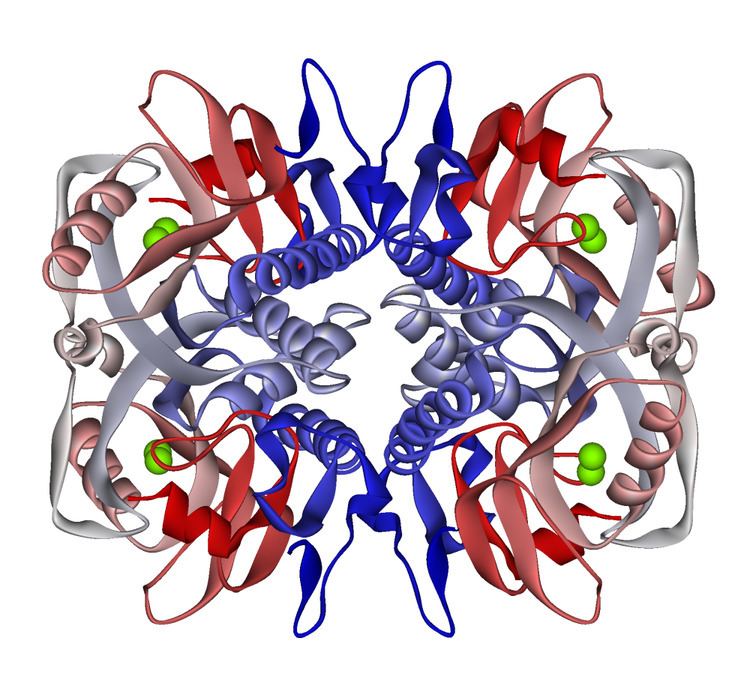Species Human Entrez 3251 | Human Mouse Ensembl ENSG00000165704 | |
 | ||
External IDs OMIM: 308000 MGI: 96217 HomoloGene: 56590 GeneCards: HPRT1 | ||
Hypoxanthine-guanine phosphoribosyltransferase (HGPRT) is an enzyme encoded in humans by the HPRT1 gene.
Contents
HGPRT is a transferase that catalyzes conversion of hypoxanthine to inosine monophosphate and guanine to guanosine monophosphate. This reaction transfers the 5-phosphoribosyl group from 5-phosphoribosyl 1-pyrophosphate (PRPP) to the purine. HGPRT plays a central role in the generation of purine nucleotides through the purine salvage pathway.
Function
HGPRT catalyzes the following reactions:
HGPRTase functions primarily to salvage purines from degraded DNA to reintroduce into purine synthetic pathways. In this role, it catalyzes the reaction between guanine and phosphoribosyl pyrophosphate (PRPP) to form GMP, or between hypoxanthine and phosphoribosyl pyrophosphate (PRPP) to form inosine monophosphate.
Substrates and inhibitors
Comparative homology modelling of this enzyme in L. donovani suggest that among all of the computationally screened compounds, pentamidine, 1,3-dinitroadamantane, acyclovir and analogs of acyclovir had higher binding affinities than the real substrate (guanosine monophosphate). The in silico and in-vitro correlation of these compounds were test in Leishmania HGPRT and validates the result.
Role in disease
Mutations in the gene lead to hyperuricemia:
Creation of hybridomas
Hybridomas are immortal (immune to cellular senescence), HGPRT+ cells that result from fusion of mortal, HGPRT+ plasma cells and immortal, HGPRT− myeloma cells. They are created to produce monoclonal antibodies in biotechnology. HAT medium inhibits de novo synthesis of nucleic acids, killing myeloma cells that cannot switch over to the salvage pathway, due to lack of HRPT1. The plasma cells in the culture eventually die from senesence, leaving pure hybridoma cells.
